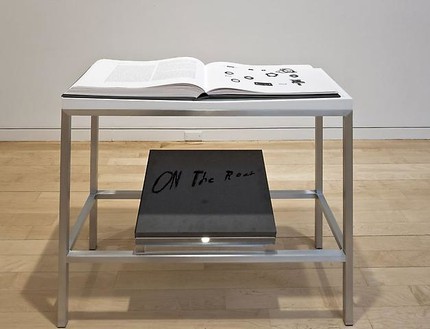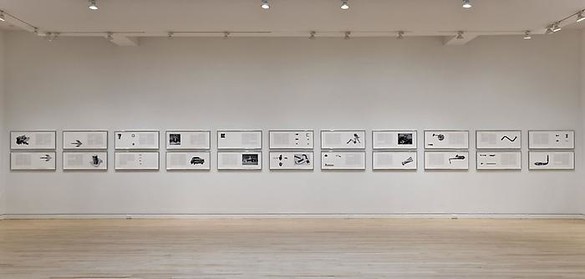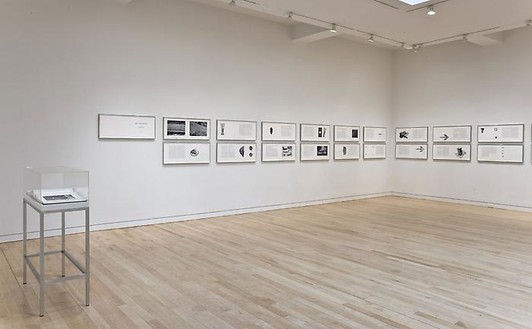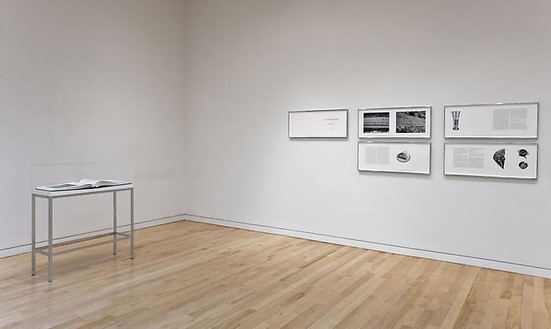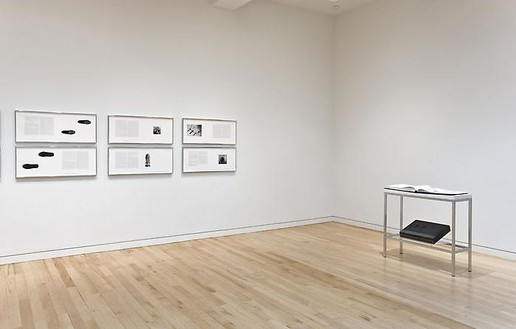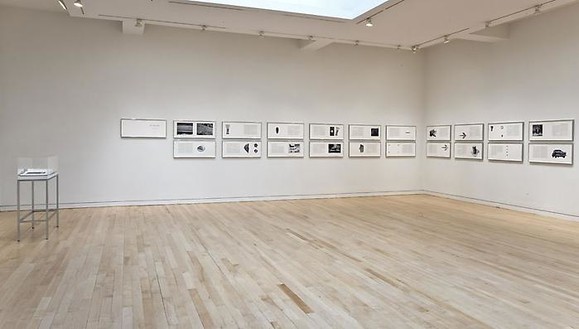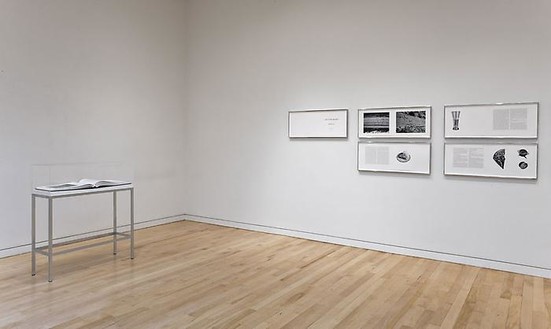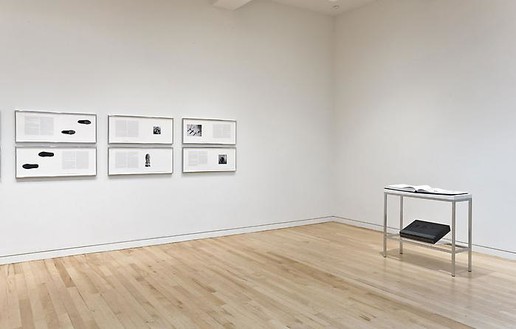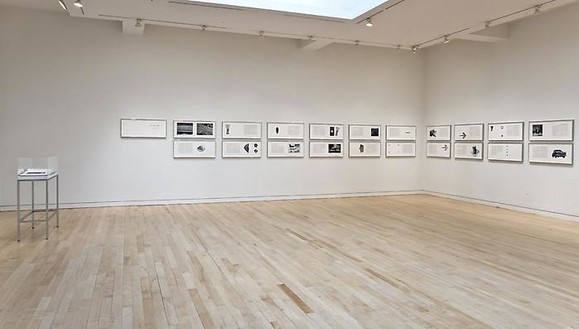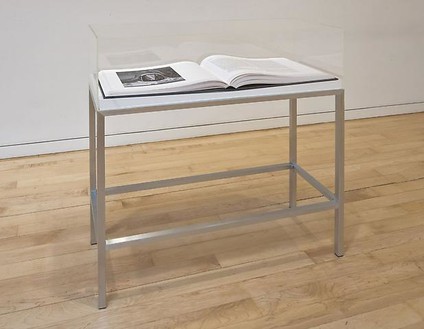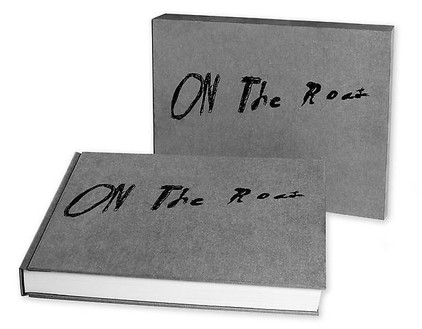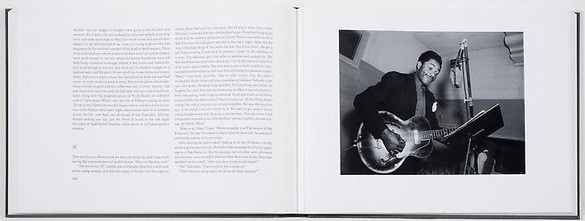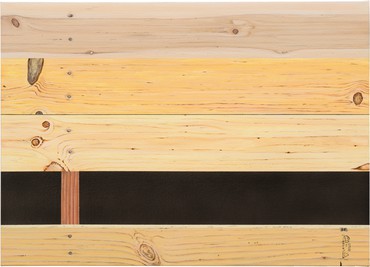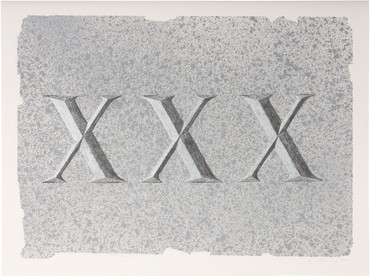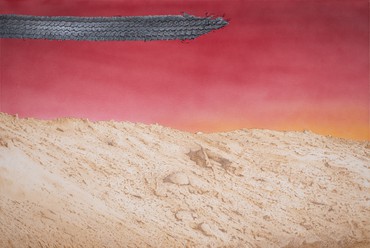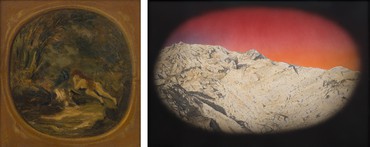About
The original novel was published in 1957 and it’s about a group of crazy young people who just travel back and forth across the United States. Sometimes they hitchhike and sometimes they drive cars. They steal cars and just want to be on the road the whole time. I’ve always liked that notion.
—Ed Ruscha
In 1951, Jack Kerouac wrote On the Road on his typewriter as a continuous 120-foot-long scroll, feverishly recording in twenty days his experiences during road trips in the United States and Mexico, which he began with Neil Cassady in the late 1940s. On the Road was finally published in 1957, and Kerouac was immediately acknowledged as the voice of the Beat Generation, a new group of writers, including Allen Ginsberg and William S. Burroughs, who became known for their embracing of radical free-verse style.
Ed Ruscha’s singular art has recorded the shifting emblems of American life in the form of Hollywood logos, stylized gas stations, and archetypal landscapes. His wry choice of words and indirect phrases mines the perpetual interplay between language as a physical thing and language as a transparent medium. During the 1960s, he created a series of cheaply printed photographic books as deadpan meditations on the romantic vision of the road epitomized by the Beats. His typologies of the urban environment of Los Angeles included Twentysix Gasoline Stations (1963) and Every Building on the Sunset Strip (1966). In Royal Road Test (1967), he brought the word and the road together in a conceptual prank by documenting himself dropping a vintage typewriter from a speeding Buick.
Over the last couple of years, Ruscha has turned his attention to On the Road, resulting in his own version of Kerouac’s Beat bible. Kerouac’s entire text appears accompanied by black and white photographic illustrations that Ruscha has either taken himself, commissioned from other photographers, or selected from found images to refer closely to the details and impressions that the author describes, from car parts to jazz instruments, from sandwich stacks to tire burns on a desert road.
On the Road is published by Gagosian and Steidl. The leather-bound book comprises 228 pages, signed and numbered by the artist in an edition of 350 and presented in a slipcase.
Share

Flags
Gillian Pistell writes on the loaded symbol of the American flag in the work of postwar and contemporary artists.

Donald Marron
Jacoba Urist profiles the legendary collector.
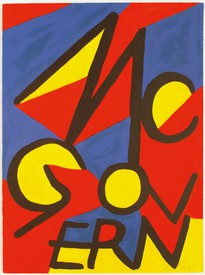
The Art History of Presidential Campaign Posters
Against the backdrop of the 2020 US presidential election, historian Hal Wert takes us through the artistic and political evolution of American campaign posters, from their origin in 1844 to the present. In an interview with Quarterly editor Gillian Jakab, Wert highlights an array of landmark posters and the artists who made them.
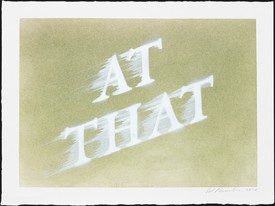
“Things Fall Apart”: Ed Ruscha’s Swiped Words
Lisa Turvey examines the range of effects conveyed by the blurred phrases in recent drawings by the artist, detailing the ways these words in motion evoke the experience of the current moment.

Artists’ Magazines
Gwen Allen recounts her discovery of cutting-edge artists’ magazines from the 1960s and 1970s and explores the roots and implications of these singular publications.
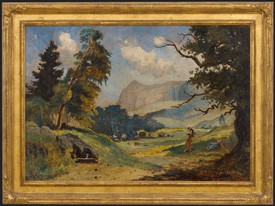
Eilshemius and Me: An Interview with Ed Ruscha
Ed Ruscha tells Viet-Nu Nguyen and Leta Grzan how he first encountered Louis Michel Eilshemius’s paintings, which of the artist’s aesthetic innovations captured his imagination, and how his own work relates to and differs from that of this “Neglected Marvel.”
News
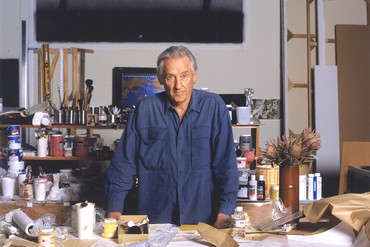
Artist Spotlight
Ed Ruscha
September 16–22, 2020
At the start of his artistic career, Ed Ruscha called himself an “abstract artist . . . who deals with subject matter.” Abandoning academic connotations that came to be associated with Abstract Expressionism, he looked instead to tropes of advertising and brought words—as form, symbol, and material—to the forefront of painting. Working in diverse media with humor and wit, he oscillates between sign and substance, locating the sublime in landscapes both natural and artificial. Ruscha’s formal experimentations and clever use of the American vernacular have evolved in form and meaning as technology alters the essence of human communication.
Photo: Kate Simon

galleryplatform.la
Ed Ruscha
Drum Skins
May 28–June 30, 2020
Gagosian is pleased to present recent paintings by Ed Ruscha online for galleryplatform.la. Fifty years ago, Ruscha purchased a set of vellum drum skins from a leather shop in Los Angeles. He has continued to collect these vintage objects, and since 2011 he has used them as canvases for the works on view in his solo exhibition Drum Skins at the Blanton Museum of Art at the University of Texas at Austin.
Installation view, Ed Ruscha: Drum Skins, Blanton Museum of Art, University of Texas at Austin, January 11–October 4, 2020. Artwork © Ed Ruscha
